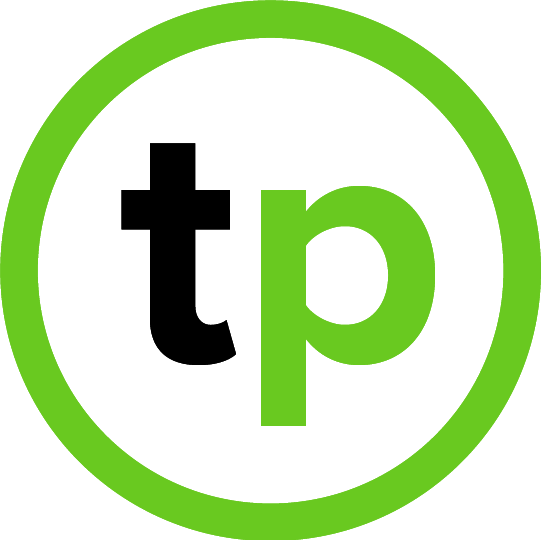
Data is truly the key to running any successful business. The right kind of data will tell you everything you need to know about what’s going well, what needs to change, and what decisions need to be made within the business to keep everything running like a well-oiled machine.
Unfortunately, 72% of companies don’t review customer experience metrics or share them with all employees regularly, which makes these brands more susceptible to poor CX and customer success ratings due to a lack of consistency within customer service.
For E-Commerce businesses especially, tracking specific metrics that provide insight into customer satisfaction is essential. Without an understanding of how your customers are interacting with your business and how they feel about your brand, creating strategies and tactics for acquiring new customers and retaining existing ones will feel like searching for the only light switch in a dark room.
What Are The Top Metrics Your E-Commerce Business Should Be Tracking In 2023?
There are several metrics E-Commerce businesses typically track to ensure that customer loyalty, retention, and revenue are hitting all the right marks. However, before you get too into the weeds of determining which to focus on, we’re here to share a few key metrics that you should plan to prioritize in 2023.
Customer Satisfaction (CSAT) Score
CSAT is short for customer satisfaction score, and it’s a very common KPI (generally expressed as a percentage from 0% to 100%) that businesses use to measure and gauge customer service and product quality by collecting customer feedback.
Typically, businesses collect this feedback by asking customers to rate their services, as well as their satisfaction, on a scale of 1 to 5 (1 being extremely dissatisfied, 5 being extremely satisfied). You can also do this by offering more in-depth surveys that ask specific questions about the customer’s overall customer service experience with your brand.
Check out a few examples of our favorite CSAT surveys (we especially love the surveys that give customers additional space to express their feelings about a product or service!).
Once you’ve begun collecting data, you’ll be able to calculate your CSAT percentage score using this nifty formula:
(# of positive scores “4 stars and 5 stars” / # of total scores) x 100 = CSAT %
Net Promoter Score (NPS)
In the simplest terms, a Net Promoter Score (NPS) asks customers whether or not they would recommend your business to someone else. The most popular customer service metric used by businesses, NPS was still found as recently as 2022 to be a core metric that 69% of CX leaders use to measure customer experience because it’s that indicative of a successful customer service team.
A thorough NPS is two-fold, because it not only asks customers to rate their experience on a scale of 0 to 10 (similar to CSAT scores), but it also allows them to explain their rating.
This wicked combination of qualitative and quantitative data creates an incredible data store for your business to analyze and use in decision-making, whereas the qualitative data alone categorizes customers into three unique groups:
- Promoters – Customers who rate their customer satisfaction as a 9 or 10 are considered loyal buyers who will continue to purchase from your company as well as promote your brand to others.
- Passives – Customers who respond with a ranking of 7 to 8 fall into the passives category and aren’t generally included in the analysis process. Essentially, their rating showed that though they didn’t have a poor experience, they’re not yet loyal to your brand.
- Detractors – Detractors are unhappy customers who typically reply with a 0 to 6 ranking. These customers are not only unlikely to buy from you again, but they’re also more likely to share their negative feedback with other potential customers. Yikes, right?
Though there are tools you can use to determine your NPS, you can also calculate it on your own by subtracting the percentage of detractors from the percentage of promoters.
The result will range from -100 to 100 and serves as an excellent measure of your business’s likelihood of growing and scaling in the future.
Customer Effort Score (CES)
Your customer effort score, or CES, measures how much effort a customer has to put into dealing with a customer service issue they encounter with your business, such as a troubleshooting inquiry or a return request.
As you can probably imagine, your CES is a huge indicator of the efficacy of your customer service team as well as the processes you have in place for customers to contact and communicate with a representative of your brand.
Though CES typically only measures specific customer service experiences instead of a customer’s overall experience with your brand, it can be analyzed alongside NPS to gauge customer satisfaction throughout certain touchpoints like post-purchase or after resolving a service ticket.
CES feedback should be collected after these touchpoints are complete. The surveys will typically consist of a single question that asks the customer how easy or difficult they found their experience to be and measures responses based on their positivity or negativity. It’ll usually look something like this:

You’ll be able to calculate your CES by finding the average of all the responses collected using this formula: (Total sum of responses) ÷ (Number of responses) = CES score.
While a score in the 5 to 7 range indicates that customers rated their effort experience positively (along the track of Somewhat Agree to Strongly Agree), scores in the 1 to 3 range (Somewhat Disagree to Strongly Disagree) indicate negative feedback from customers who had a difficult interaction with your customer service team.
Average Response & Resolution Times
It goes without saying that your average response and resolution times should be consistently low to achieve a higher rate of customer satisfaction.
After all, no one wants to wait for an extended period to get in touch with a customer service agent, especially when they are trying to have an issue resolved.
To measure the average time it takes for an agent to respond (also known as first response time, or FRT) to a customer inquiry, add up the total amount of time it took for agents to respond to each ticket from a specified period (ie. the previous month) and divide that number by the total number of tickets.
The lower the score, the better your response times and rates of customer satisfaction.
Whereas average response time measures how quickly your agents respond to a customer inquiry or ticket, average resolution time measures the average amount of time it takes a customer service agent to resolve the issue and mark it as closed.
Similarly with average response time, calculating average resolution time looks a bit like this: take the total duration of all resolved conversations and divide that number by the number of customer conversations that took place in a specified time period. The result of this equation is your average resolution time.
Average Handle Time (AHT)
Average Handle Time (AHT) is a measurement of the average amount of time that a customer service representative spends on a single customer interaction. While a low AHT indicates that representatives are handling calls quickly and efficiently, a high AHT may indicate that your agents are spending too much time on each call or that the calls are complex and require more time to resolve.
Either way, a high AHT shows that there is room for improvement in how quickly and efficiently your agents’ process and handle customer service tickets. Often, this can mean that it’s time to improve the training processes for new and existing agents and update internal knowledge bases that map out specifically how to handle certain customer service issues.
However, sometimes it can also indicate a need for streamlining workflows using automation rules that reduce repetitive tasks.
A low AHT not only results in higher retention rates by improving customer satisfaction, but it can also boost morale within your customer service team by keeping customer interactions more pleasant.
To calculate AHT for phone and chat, try using the following formulas.
- For Phone: Divide the sum of your total talk, hold, and follow-up time by your total number of calls. Note that the follow-up time means any time it took for your agents to get back to the customer if the issue wasn’t resolved at first contact.
- For Live Chat: Add the total amount of chat and follow-up time, then divide that number by your total number of chats.
How To Track Top Metrics Using A Helpdesk
Tracking these metrics on top of everything else your customer service team has to handle in your business on a day-to-day basis can feel overwhelming, but they don’t have to do it alone.
Most helpdesk softwares that specialize in E-Commerce will have analytics tools in place to help you monitor vital KPIs so you can make data-driven decisions and understand where to make improvements within your customer service department.
There are even E-Commerce helpdesks that will help you optimize processes to strengthen your overall customer experience and keep customer satisfaction at an all-time high.
Check out a few of the popular helpdesk software options we covered in a recent blog post, and try them out today to make tracking and analytics a priority in your business this year.
Outsource Customer Service To TalentPop To Prioritize Customer Satisfaction In 2023
Here at TalentPop, we take customer satisfaction very seriously because we know that without satisfied customers, loyalty and retention will drop and prevent your business from growing and scaling.
To set you up for success, we utilize Team Leaders that are put in place to conduct weekly quality assurance analyses within your business.
By tracking metrics like first-time response times and number of tickets closed per day to CSAT scores submitted by your customers, we can take a closer look at the most crucial KPIs that can make or break your business and address them with your customer service agents so they can continue to improve within their role and provide elevated experiences for your customers.
From the very beginning of our streamlined onboarding process to our highly-skilled, E-Commerce-trained agents and trusted partnerships with top helpdesk software companies like Gorgias and Gladly, you can always count on TalentPop to go above and beyond for your brand.
To begin outsourcing customer service to qualified agents who will make customer satisfaction a top priority for your business in 2023, book a call with our team today.

Need Help With Customer Service?
Book a call with one of our specialists today to see how TalentPop can assist you with putting together a solution for your customer service needs.
Book a Call
Need Help With Customer Service?
We're elevating customer experiences at 500 top E-Commerce brands (and counting). Let's see what we can do for you!
Get Started

.svg)






















